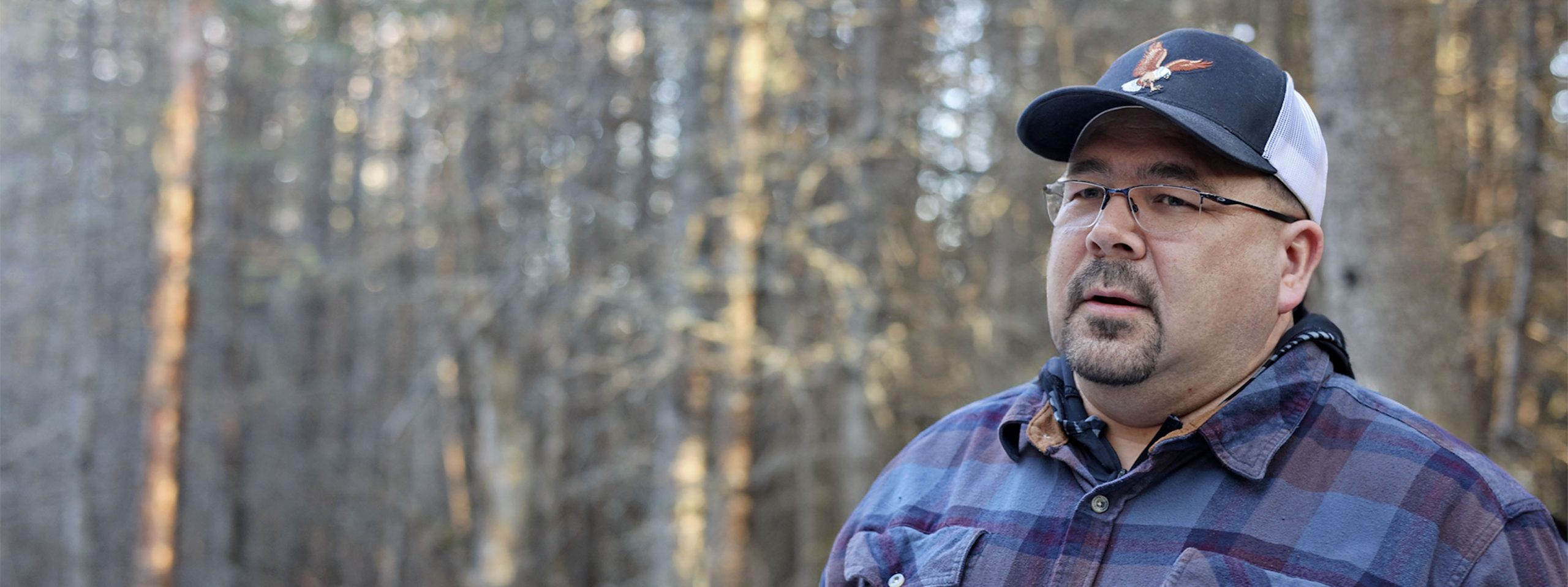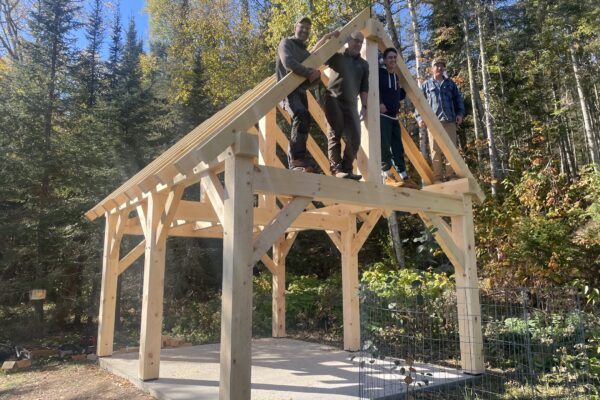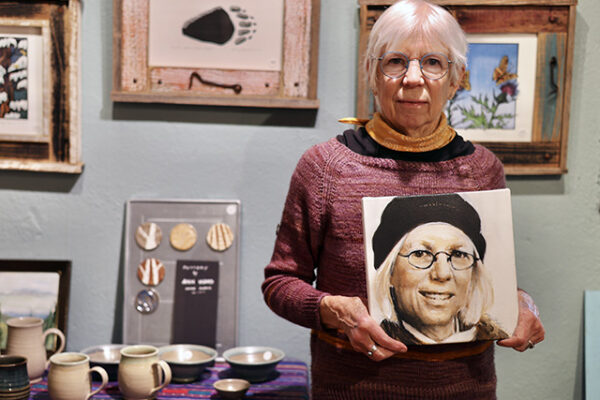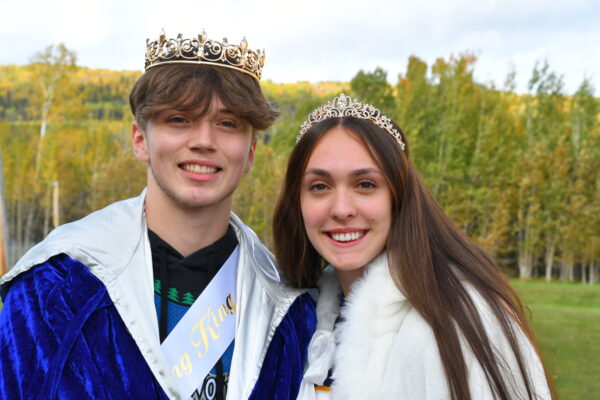Travis Novitsky shares the history of the sacred Spirit Tree
On a particularly steep and rugged stretch of Lake Superior shoreline, in the far northeastern corner of Minnesota, a very old and twisted cedar tree embraces the precipice of a lichen-covered rock ledge. The Ojibwe people call it Manidoo-giizhikens, or Spirit Little Cedar Tree, and it’s spiritually significant to the native Ojibwe people of Grand Portage.
Attendees of Heart of the Continent Partnership Winter Gathering had the opportunity to experience a guided hike to the sacred Spirit Tree in Grand Portage on February 21, 2024. The hike was led by Grand Portage tribal member, author, and night sky photographer Travis Novitsky.
WTIP’s Chuck Olsen documented the guided hike. The transcript, photos and audio are below.
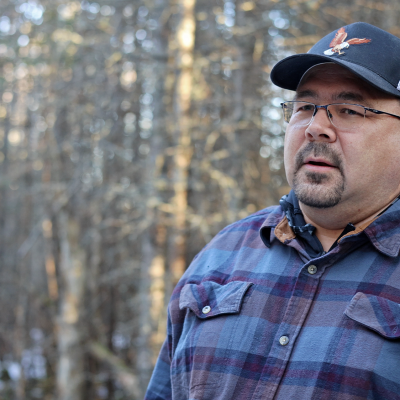
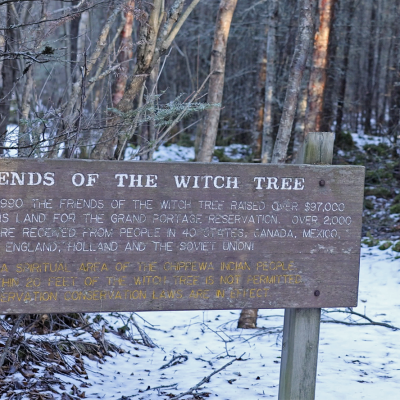
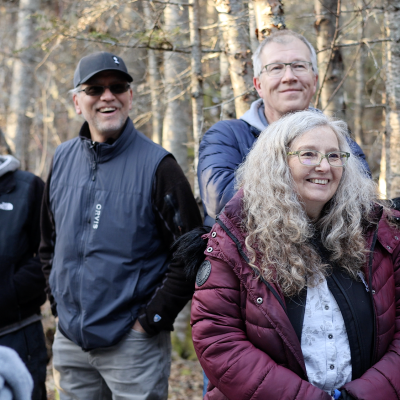
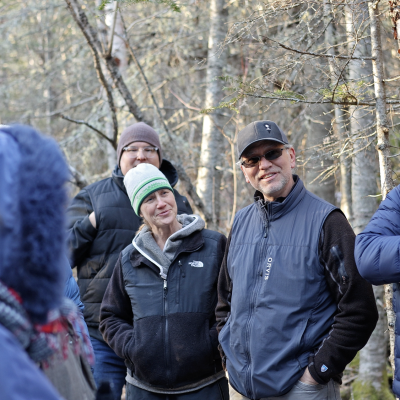
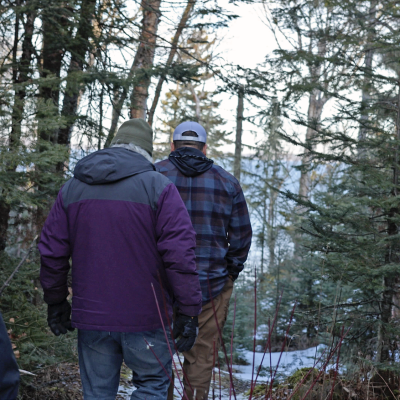
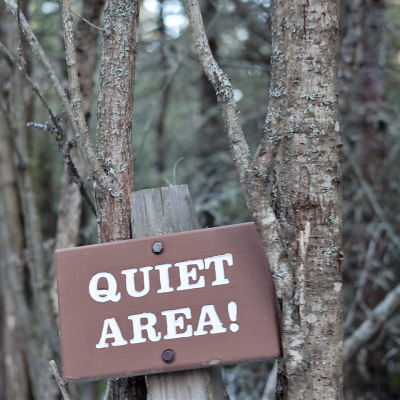
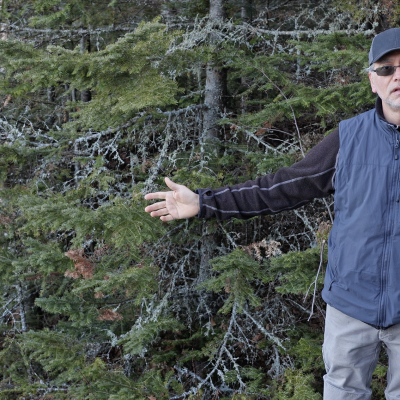
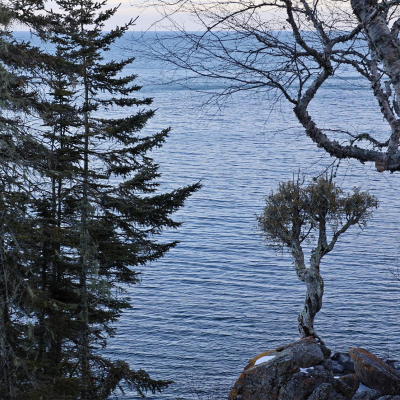
Travis Novitsky
When I bring folks down here, I like to stop at the sign here because it’s a good spot to do some talking before we get down there. Generally, we get down there and people just kind of want to have their moment appreciating the tree. You’ll see the sign here, it says Friends of the Witch Tree on it, and pieces of land like this fell out of tribal ownership.
And so for many years, this was private land down here. And in the early 80s, the landowner expressed interest in selling. And of course, there was fear about it going to a commercial developer, which, we wouldn’t want that, of course.
So this local, I guess you’d call it a grassroots group, which largely consisted of my dad and Bill Corcoran, who I think was on the council at the time.
But it was like four or five people. George Morrison was involved. My dad put together a slideshow using his photography.
Some of those outings I talked about coming down here at night with lightning and aurora shots. He set this slideshow, old school carousel, right, of slides and synced it to music and George Morrison narrating. And I think it was only like 10 minutes long, but they went all over the place showing that slideshow to raise money to try to buy this land.
And Craig Blacklock, a Minnesota photographer, he donated three images that were used on a poster. So just three vertical images side by side. And the poster was used as well to help raise funds.
I don’t remember the amounts, but if you donated like $50, you got a poster. If you donated $100 or more, I think you got a signed poster. And this is getting kind of worn here, but it says that they did raise over $97,000.
And 2,000 donations received from people in 40 states, Canada, Mexico, England, Holland, Soviet Union, probably more than that, more than could fit on this sign. But single donations ranged anywhere from probably a dollar to I think the largest one, largest single donation was just over $5,000 from what I remember. But 1987, I was in sixth grade, ’87 or ’88.
And every year back then, the sixth graders went on a class trip. And we went down to the state capitol. Part of the trip was to meet the governor.
So my three classmates and I, I was the only boy, got to meet Governor Rudy Perpich. We presented him with the poster, and he reached in his pocket, gave us 50 bucks, and we were on the news.
Everybody gets a laugh out of, because back then I loved wearing tucked-in shirts. I hate it now. But I was wearing like this nice little, I think it was blue and white horizontal stripes, all tucked in my belt looking just, you know, and I’m standing there next to Sherry Caribou, my classmate, who’s wearing an Iron Maiden sweatshirt. So quite the mix of kids there.
One last thing I’ll touch on, and we’ll walk down, is the name. Most people, I would say, recognize the name The Witch Tree. And up at the park, a lot of times people will come in, and they come in, they probably don’t think they’re being disrespectful, but it comes across that way to us when they just march in and, hey, we want to see the Witch’s Tree, how do we go find that?
And so number one, I tell them, well, it’s not the Witch’s Tree. It’s not even the Witch Tree, really. It’s Manidoo-giizhikens, which is Spirit Little Cedar Tree.
And that name, Witch Tree, as far as I understand, came from a non-native painter by the name of Dewey Albinson, who back in the 50s, I think it was, 40s or 50s, did a painting of the tree, and he titled that painting The Witch Tree. And that’s, as far as I understand, where the name came from, where this name came from. But it became popularized over the years.
But I think a lot of people have kind of a negative connotation with that term, thinking of a witch. Of course, there’s good witches and bad witches, but I much prefer just calling it the Spirit Tree for short, off of Spirit Little Cedar Tree, because it, to me anyway, it doesn’t have a negative connotation. It’s a very positive place.
It is a spiritual place. And to me, every place I go in the woods is spiritual, but there are places that are extra special, and this is one of those places. So as we walk down there, it’s okay to talk, but just try to keep your voices low and just be respectful.
Erik Carlson
Our ancestors would travel across to Isle Royale on these little birch bark canoes. And they were praying with all their might.
Asking for all the assistance and help they could get to have a safe journey. And so like the tobacco bundles you were given, that’ll be your gift and that’ll be your prayer for your safe journey, or whatever journey you’re on. I’ve had chemical dependency counselors from Leech Lake come up here, pray for a good journey of recovery for some of their people who are going through their programs.
There’s all kinds of journeys that happen, and it doesn’t have to be a trip in a rickety little birch bark canoe, but we all have our perils in our life. And that’s why that gift is going to be extra special when you drop it off there, or you’ll find a special place for it to leave your prayer.
Travis Novitsky
The directions also correspond with traditional plants or medicines. So there’s sage, sweetgrass, tobacco, and cedar. And the two other, well there’s three other directions, those are seven directions.
We’ve got, what do you think the next two might be?
Father Sky, Mother Earth, and Within. Yes, very good. That seventh direction comes from within us.
And I heard a story once, I don’t know where it came from, but of an Ojibwe grandmother asking her granddaughter, how is your fire burning today? And she’s referring to that inner direction, and that we all have this kind of fire in a sense that burns within us, and we have to maintain that fire, we have to nurture that fire in a healthful way, in a good and proper way, and in order to stay healthy and live healthy lives, live in a good way. We use boozhoo a lot for a greeting, but there’s another greeting of aaneen.
And if I remember right, he said that aaneen is a way of saying that we’re acknowledging each other’s light. So we’re saying like, when we say aaneen, we’re not just saying hi, we’re saying I acknowledge you, I see your light. And I always thought that was a really cool story.
And a good way to think about things.





